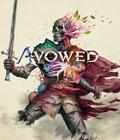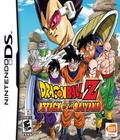With a series as long-running and popular as Dragon Ball Z, you expect the video game versions to cover a few expected genres. Indeed, some of these expectations have been met over the 15+ years of the series' existence. There have been a few platforming games based on the anime as well as the series predecessor, Dragon Ball, but a majority has been fighting games. For a series that has been focused on spectacular fights and large battles, it's unusual that a new game is being done in an RPG format despite the slow pacing of battles for which the show is known. Surprisingly, that's exactly what Namco Bandai Games did with Dragon Ball Z: Attack of the Saiyans. Even more surprising is that the end result is quite good.
Unlike most of the Dragon Ball Z games on the market, the plot for Attack of the Saiyans doesn't take an already-told story arc and cover it with RPG elements. The game seems to be a mix of elements from both Dragon Ball Z and the original Dragon Ball series. The first half covers the years between both anime series. You control Krillin, Tien and Yamcha as they finish up their training with Master Roshi before going out on their own for more training and participating in the 23rd World Tournament. The second half of the game begins to cover Dragon Ball Z proper as it goes through the series' first story arc from the arrival of Raditz to Gohan's training and Goku's travels on Snake Road. It finally culminates in the initial battle with all of the warriors and a resurrected Goku against Broly and Vegeta.
Gamers who are familiar with the basic Japanese RPG structure will be knowledgeable about how the game plays out. During exploration sequences, players roam towns to shop for items that can either boost their party attributes or help out during and after fights. Outside of towns, players can search for out-of-the-way treasure chests that contain a variety of common and rare items that will also help in their quest. During the exploration sequences outside of towns, players can stumble upon a random battle where they can either run away or stand and fight. All of the fighting is handled via a menu-based system where players can choose to perform regular attacks or ki-based attacks that are more powerful but limited due to their dependence on the secondary ki meter. Matches end when one side either retreats or is completely wiped out. Surviving party members gain experience points, which enable them to level up and acquire statistical boosts.
The game introduces a few new elements to the standard RPG mechanics. Capsule items are ones that are always active and whose abilities differ depending on their slot position. For example, placing the gas mask in the top spot will prevent the player from taking damage in poisoned areas, but placing it on the bottom spot will only reduce the damage by 50%. The effects also apply during combat, where capsule items can initiate darkness or poison at the beginning of each fight. At the end of every attack move, all players in the party gain back some health, though the amount of health retrieved is dependent on your character's stats, which can be customized after every level gain. The sparking combo attack is also new in terms of how it's activated. Instead of activating a super special attack move, players have to figure out which ki attacks need to be executed by every member of the party to trigger the sparking attack amplification.
One thing that can either irk or please gamers, depending on their experiences with Japanese RPGs, is that Attack of the Saiyans does a good job of being very linear. It can't be helped since this is an RPG that has to adhere to the events that occurred in the anime and manga, but the crystal ball item you obtain at the end of the prologue makes it abundantly clear where your character should be headed to progress the story. The game contains a few side-quests and bosses, and while they provide the player with some difficult challenges, you won't be able to partake in any of the side activities until the beginning of the final chapter. Considering that the game can command an average of 20 hours of gameplay, it takes quite some time before the shackles of linearity are broken.
The other caveat is that the game is pretty unfriendly to those who are unfamiliar with the Dragon Ball lore. If you've never seen the episodes or are unfamiliar with the series, then the game provides no clue about who the characters are or their importance. It would have been nice if even a brief section off the path of the main game would've provided some character background. This issue also plagues most anime-based titles but since this is an RPG, a genre where story is paramount, having a little background would've made the game more meaningful to those who aren't immediately fans of the series.
Just because the game is very linear, though, doesn't mean that it isn't any good. The battle system is quite solid, with the advanced blocking system being a nice touch. The ability to distribute points after every level-up sequence is also good, and the partial health regain after every move would be great to see in other RPGs. The best thing the game does is strictly for Dragon Ball Z fans, and that's giving them something new to the story. More often than not, the fans are forced to play through the same story arcs game after game, making it difficult to become excited when a new game in the series comes out. By making at least half of the game cover territory that's not in any of the other Dragon Ball Z games, it makes this title more interesting for fans since they get to see characters do something new as opposed to fighting the same battle over and over, ad nauseam.
Unlike most DS games, the controls for this title don't really make use of the touch-screen or microphone. In fact, the touch-screen is only ever used in the main menu to start a game and on the world map to select a location when you don't feel like using the d-pad. The d-pad is used for both character movement and for menu selection. The A button is used to talk to people in the towns, investigate objects, and confirm menu selections while the B button is used to cancel menu selections and use the ki blast in areas where necessary. The controls are very responsive and intuitive for gamers who have played a good number of RPGs, but you'll find that you mostly use the A button and d-pad until your timing improves for advanced blocking.
The graphics are good, though they feel somewhat out of place for the system. The backgrounds look great, with a wide swath of colors creating an environment that looks more detailed and richer when compared to the anime. By contrast, both the enemies and heroes are composed completely of sprites with thick black borders. There are quite detailed, though the enemies sport better details because of their large size. The designs are classic Toriyama, though fans of the Z series only will be thrown off by the enemy designs. Giant dragons, large snakes, and ghosts are par for the course, but agents in bunny costumes and vicious-looking pandas will puzzle those who aren't familiar with the original Dragon Ball series.
Curiously, the game's graphical look seems to be a better fit for the GBA than the DS. The sprites look great, but the animation is barely there. The case is made even stronger during the exploration sequences; the character sprites are rather tiny, making it more difficult to see the current party leader. The only time you see the graphics taking advantage of the DS system is during the special moves, such as the Kamehameha, where the particle effects are nice and crisp. The overall graphical package is still very good, but it isn't exactly showcase material for the system.
Unlike the controls and graphics, the sound feels like it belongs on this portable console. The score is rather rich and compares nicely with that of other RPGs on the system. The same can be said of the sound effects, though the number of different effects is limited due to the many similar actions that occur during combat. Some voice acting is limited to combat sequences. All of the voices are just battle cries, but what makes it interesting is that they are all in Japanese. At a time when anime-based games try to offer dual-audio soundtracks, it is a bit reeling to see a game with one vocal track — especially when the chosen track isn't English. It won't hinder the experience and some of the more dedicated fans may appreciate hearing the battle cries in Japanese.
Dragon Ball Z: Attack of the Saiyans turns out to be a surprisingly good game. RPG fans will find this to be a simple game that doesn't do much to advance the genre but still proves to be an enjoyable, and rather lengthy, experience. Fans of the anime will appreciate that the game covers new territory instead of rehashing the same plotlines over and over again. The only complaint that can be levied is that the game barely seems to take advantage of any of the system's strengths, making it feel like an enhanced port of a GBA title instead of something developed for the Nintendo DS. If you're looking for a good Dragon Ball Z game or a light RPG, you can't go wrong with this title.
Score: 7.5/10
More articles about Dragon Ball Z: Attack of the Saiyans












 Dragon Ball Z: Attack of the Saiyans follows the Saiyan Saga of the original DBZ story starting from the World Tournament and Gokus triumphant defeat of Piccolo. Players will take the role of Goku and travel the DBZ universe from jungle to Snow Mountain on their quest to victory.
Dragon Ball Z: Attack of the Saiyans follows the Saiyan Saga of the original DBZ story starting from the World Tournament and Gokus triumphant defeat of Piccolo. Players will take the role of Goku and travel the DBZ universe from jungle to Snow Mountain on their quest to victory.





































